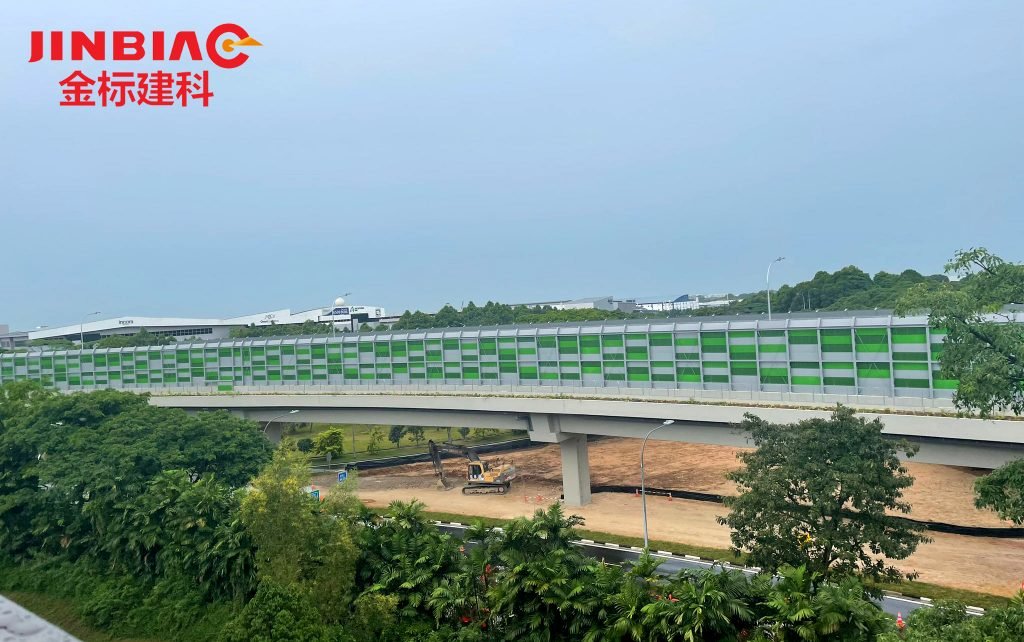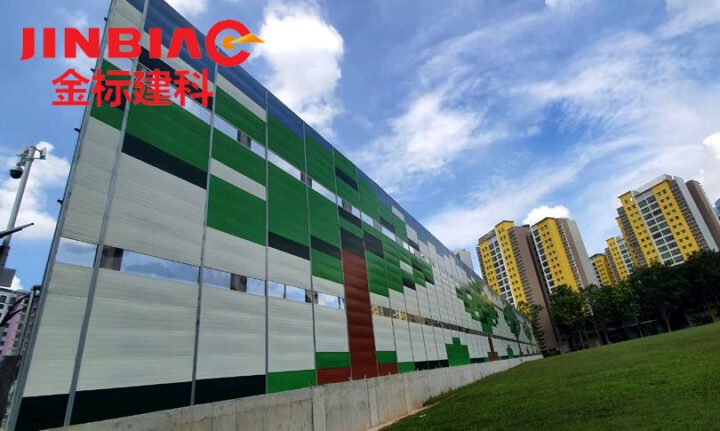
The challenge of creating livable urban spaces in a densely populated city like Singapore is complex. Among the many factors demanding attention, noise pollution is a significant and often understated issue impacting the well-being of citizens.
To combat this, Singapore has turned to innovative solutions, one of which is noise barriers. Noise barriers are not just about blocking sound; they amplify the livability, sustainability, and appeal of urban spaces.
1. Noise Barrier Design
Noise barriers are more than just walls; they are intricate structures meticulously designed to diminish the transmission of airborne sound waves. In Singapore, designers and engineers balance functionality and aesthetics, ensuring the barriers blend seamlessly into the urban fabric while effectively reducing noise impact.
Materials and Effectiveness
The noise barrier in Singapore utilises a combination of dense materials like concrete, wood, and metal to absorb and reflect sound waves. These barriers can achieve a noise reduction of up to 20 decibels, offering a significant reprieve in high-traffic zones and urban centres.
Traffic Noise Reduction
Along the bustling expressways and major thoroughfares, noise barriers play a critical role. By mitigating the noise from vehicular traffic, they contribute to the overall soundscape management, fostering a peaceful environment for city dwellers.
2. Aesthetics and Integration
Gone are the days when noise barriers were unsightly blocks dotting the landscape. In Singapore, these structures are integrated into the city’s architecture, championing a new era of design where functionality meets beauty.
Complementing Urban Design
Architects and urban planners work hand-in-hand to ensure noise barriers enhance the surrounding environment. These barriers become an organic part of the urban vista by mirroring the elements of nearby buildings or parks.
Singapore’s Showcase
The city is home to some of the most beautiful noise barrier designs in the world. From the lush flora-integrated walls along residential areas to the eye-catching patterns embellishing industrial zones, Singapore’s noise barriers are a testament to the city’s commitment to thoughtful design.
3. Environmental Benefits
Beyond the sonic improvements, noise barriers also bring about environmental advantages, such as reducing the adverse effects of noise pollution on surrounding ecosystems and contributing to a more sustainable urban ecology.
Quieter, Healthier Urban Spaces
By reducing noise levels, especially in residential areas, noise barriers contribute to a quieter, more restful environment. Lower background noise fosters better mental health, allowing residents to enjoy a higher quality of life.
Wildlife Welfare
In more natural settings within the city, such as along nature reserves or the Singapore River, noise barriers protect the sensitive hearing of nearby wildlife. These structures can play a part in conservation efforts by maintaining ecologically important quiet zones.
4. Community Engagement
The success of noise barriers is not solely measured by their physical attributes but also by how they resonate with the community. Engaging with residents during planning and construction is key to fostering a sense of ownership and pride in these structures.
Public Participation in Planning
Local residents and community groups often have valuable insights that can influence the design and location of noise barriers. Singapore’s approach to public consultations ensures that the barriers are not just a technical solution but a community-driven feature.
Public Perception and Acceptance
An inclusive planning process leads to public support for these interventions. When communities feel that their concerns are being addressed, noise barriers are perceived not as barriers but as enablers that improve the local environment.
5. Technological Innovations
Technological advancements are continually reshaping the future of noise barriers. In Singapore, this means incorporating cutting-edge features that enhance the barrier’s effectiveness and utility.
Smart Noise Barriers
Emerging technology allows for the integration of sensors and adaptive systems in noise barriers. These ‘smart’ barriers can adjust their permeability and sound manipulation in real-time, responding to traffic conditions and airflow, and offering an intelligent defence against urban noise.
6. Economic Impact
Implementing noise barriers in urban environments also carries a significant economic impact, creating value for both the public sector and residents. These structures can enhance property values, attract tourism, and stimulate local economies by creating green spaces.
Property Value Increase
Properties located near busy roads or industrial areas often experience a decrease in value due to noise pollution. By mitigating noise, barriers can make these areas more desirable to live in, thus increasing property values and improving the overall attractiveness of the neighbourhood.
Boosting Local Economies
Aside from their primary function, noise barriers can become focal points for community and recreational activities. Parks, walkways, and bike paths integrated with or adjacent to these barriers encourage local spending and tourism, contributing to Singapore’s urban centres’ vibrancy and economic health.
7. Challenges and Solutions
While noise barriers offer numerous benefits, their implementation is not without challenges. Addressing cost, maintenance, and adaptability issues is vital for these structures’ sustained success in Singapore’s evolving urban landscape.
Cost and Maintenance
The initial investment for constructing high-quality noise barriers can be significant. However, Singapore has approached this challenge through innovative financing and using durable materials requiring minimal maintenance, ensuring long-term cost-effectiveness.
Adaptability to Urban Growth
As Singapore continues to grow, noise barrier designs must be adaptable to changing urban landscapes and technologies. The city’s commitment to continuous improvement and innovation allows it to redesign and retrofit existing barriers, ensuring they remain effective and integrated into the urban fabric.
Conclusion
Many solutions for noise barriers available in Singapore are much more than mere soundproof walls. They play a role in enhancing the city’s livability, promoting sustainable urban development, and fostering community engagement. With an eye towards aesthetics, environmental sustainability, and technological advancements, these structures continue to evolve alongside Singapore, contributing to its reputation as a global leader in urban design and management.
Hebei Jinbiao is a leading company in Noise Barrier products and Fencing products in Singapore. We guarantee to provide you with the most high-quality Sound Barrier and Fencing products along with our dedicated assistance. Do not hesitate to contact us. We are looking forward to helping you solve your noise issues, safety issues and protecting you from noise pollution as well as ensuring your safety.

